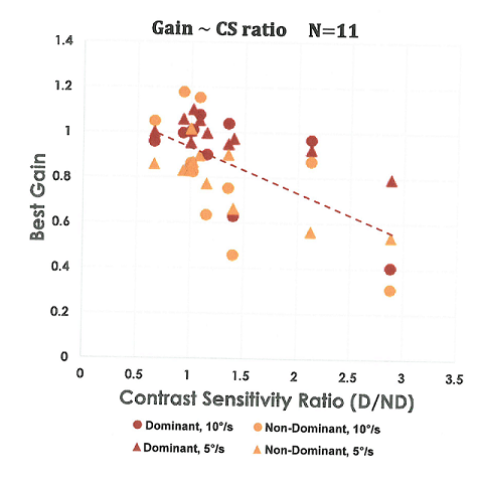Abstract
Abstract:
Macular degeneration results in heterogeneous central field loss (CFL) and often has asymmetrical effects in the two eyes. As such, it is not clear to what degree the movements of the two eyes are coordinated. To address this issue, we examined smooth pursuit in CFL participants during binocular viewing and compared it to the monocular viewing case. We also examined coordination of the two eyes during smooth pursuit and how this coordination and gain were affected by interocular ratios of acuity and contrast sensitivity, as well as CFL-specific interocular differences, such as scotoma sizes and degree of binocular overlap. We found that CFL participants hada broader range of smooth pursuit gains and a significantly lower correlation between the two eyes, as compared to controls. Across both CFL and control groups, smooth pursuit gain and correlation between the eyes are best predicted by the ratio of contrast sensitivity between the eyes. For the subgroup of participants with measurable stereopsis, both smooth pursuit gain and correlation are best predicted by stereoacuity. Therefore, our results suggest that coordination between the eyes during smooth pursuit depends on binocular cooperation between the eyes.

